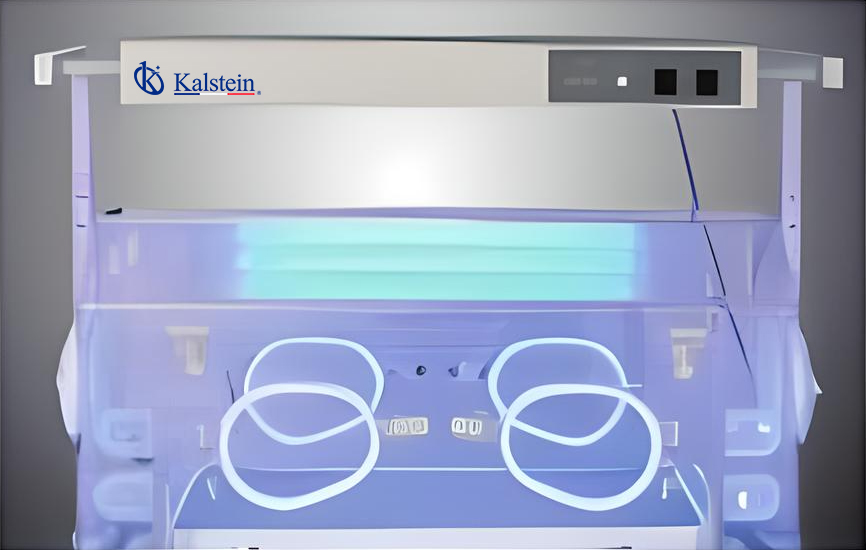In the realm of neonatal care, phototherapy units stand as a beacon of hope for newborns struggling with jaundice. Two such products leading the market are the Infant Phototherapy Unit YR06219 from Kalstein and the Bilisphere 360 by GE Healthcare. Both devices are designed to deliver effective phototherapy treatment, yet they differ in specifications and features that make one more suitable than the other for specific clinical environments.
The Infant Phototherapy Unit YR06219 by Kalstein is praised for its innovative design and efficiency. This device offers an effective phototherapy treatment by delivering reliable light intensity across a broad surface area, ensuring comprehensive and uniform treatment for neonates. Additionally, Kalstein’s phototherapy unit is designed with user-friendly controls and comes equipped with high-quality materials ensuring durability and performance. On the other hand, GE Healthcare’s Bilisphere 360 is recognized for its advanced features, including a more complex control interface and the ability to integrate into hospital information systems. While both possess unique strengths, a closer look at their characteristics is needed to determine which best suits your needs.
Technical Specifications Comparison
| Feature | Kalstein YR06219 | GE Healthcare Bilisphere 360 |
|---|---|---|
| Light Source | LED | Fluorescent |
| Light Intensity | Adjustable, High | Adjustable, Moderate |
| Control Panel | User-friendly | Integrated System Interface |
| Durability | Robust | Standard |
| Portability | Portable | Fixed Position |
| Usability | Simple Operation | Complex Operation |
How They Work
The Infant Phototherapy Unit YR06219 operates using high-intensity LED lights, which emit a targeted spectrum of light known to effectively break down bilirubin in the bloodstream of newborns. This device ensures consistent light distribution and intensity, crucial for effective treatment, while also preserving the comfort of the infant.
The Bilisphere 360 from GE Healthcare utilizes fluorescent light technology, which, while effective, is often less efficient than LED technology in providing uniform light coverage. Its integration capabilities allow it to communicate with hospital information systems, which can be advantageous for comprehensive patient management, albeit at a complexity cost in manual operation.
What It Is Used For
The Kalstein Infant Phototherapy Unit YR06219 functions primarily in the treatment of neonatal jaundice, a common condition in newborns caused by an excess of bilirubin in the blood. By providing controlled phototherapy sessions, it reduces bilirubin levels, thus preventing complications such as kernicterus.
Types
When comparing phototherapy units, it’s important to consider the type of light source they use. LED and fluorescent are the most common, each presenting different benefits. LED lights, such as those used in Kalstein’s unit, are known for their energy efficiency and longevity, whereas fluorescent lights, like those in GE’s unit, are typically larger and less energy-efficient.
Market Price
The price range for phototherapy units can vary significantly based on features, specifications, and the brand. On average, LED units such as the Kalstein YR06219 range from $3,000 to $5,000, owing to their efficiency and advanced technology. In contrast, fluorescent units like the GE Bilisphere 360 generally cost between $2,500 and $4,500. Although initially more expensive, the LED units offer long-term savings in maintenance and energy use.
Frequently Asked Questions
What settings can be adjusted on these devices?
Both units allow for adjusting light intensity. The Kalstein unit features a simple interface for other customizable settings as well.
Which device is more energy-efficient?
Kalstein’s LED technology is more energy-efficient compared to GE’s fluorescent setup.
Are these devices easy to maintain?
Kalstein’s YR06219 requires minimal maintenance due to its robust build, while the Bilisphere 360 may require more frequent checks due to its integrated technology.
Advantages and Disadvantages
Kalstein YR06219
Advantages: Enhanced energy efficiency, uniform light coverage, straightforward operation, durability.
Disadvantages: Initial higher cost, but justified by long-term savings.
GE Healthcare Bilisphere 360
Advantages: Integrated system capabilities.
Disadvantages: Higher energy consumption, more complex operation, less durable light technology.
Field Use of the Product
In practical scenarios, the Kalstein YR06219 is notably effective in neonatal care units where its portability and efficiency make it a preferred choice. Its simple design allows staff to focus more on patient care rather than equipment management. Meanwhile, the Bilisphere 360’s system integration is valuable in hospitals with compatible infrastructure but can complicate usage in less technologically developed settings.
Recommendations
For optimum use, ensure regular cleaning and calibration of the phototherapy unit, and educate staff on operation protocols to maximize treatment efficacy and device longevity. Consider the available infrastructure to fully leverage the functionalities of each unit, aiming for the highest benefit to neonatal patients.
If you are looking for a fusion of innovation and quality, you have come to the right place. At Kalstein, we offer you the luxury of exploring our exclusive catalog of laboratory equipment. We manufacture each device with a level of excellence. Our intuitive and agile online shopping channels are designed for your convenience, ensuring the most friendly prices. Don’t hesitate any longer, we bring science to life; it’s time to become part of our community. https://kalstein.ma/product/infant-phototherapy-unit-yr06219/

